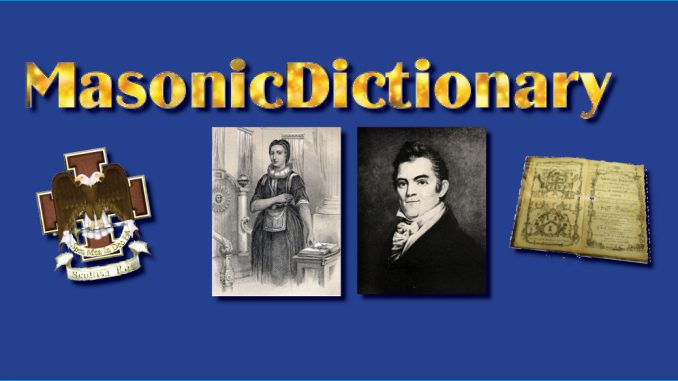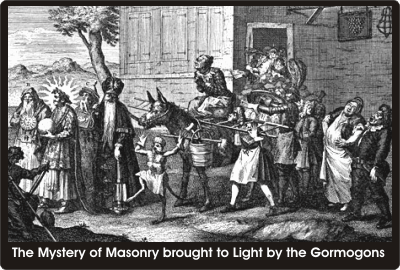
A secret society established in 1724, in England, in opposition to Freemasonry. One of its rules was that no Freemason could be admitted until he was first degraded, and had then renounced the Masonic Order. It was absurdly and intentionally pretentious in its character; claiming in ridicule of Freemasonry, a great antiquity, and pretending that it was descended from an ancient society in China. There was much antipathy between the two associations, as will appear from the following verses, published in 1729, by Henry Carey:
 The Masons and the Gormogons
The Masons and the GormogonsAre laughing at one another,
While all mankind are laughing at them;
Then why do they make such a pother?
They bait their hook for simple gulls
And truth with bam they smother,
But when thev’ve taken in their culls
Why then’t is “Welcome, Brother”
The Gormogons made a great splutter in their day, and published many squibs against Freemasonry; yet that is still living, while the Gormogons were long ago extinguished. They seemed to have flourished for but a very few years. Brother R. F. Gould has collected about all that is known about the Gormogons in his article on the Duke of Wharton, in volume viii of Transactions, Quatuor Coronati Lodge. But the reader must not overlook a pertinent quotation, from a letter written by Brother Gould, mentioned in Melville’s Philip, Duke of Wharton (page 114):
“About the Gormogons, indeed, all is inference and conjecture. We must suppose that the Society or Association actually met, but there is no distinct proof of their having done so.”
– Source: Mackey’s Encyclopedia of Freemasonry
Hogarth Painting
 …Next to Night, Hogarth’s engraving, The Mystery of Masonry brought to Light by the Gormogons, is of greatest interest to the student. The Gormogons were a secret society established in 1724 in England in opposition to Freemasonry. Absurd and intentionally pretentious in character, it claimed a great antiquity and that it was descended from an ancient Chinese society. It flourished but a short time. Hogarth’s engraving depicts characters of interest to Masons, among them a figure said to represent Dr. James Anderson, and another the Duke of Wharton, Grand Master 1722-23. Opinions differ as to the original publication of the print, for while it appeared about 1742, it is believed to have been engraved about twelve years earlier.
…Next to Night, Hogarth’s engraving, The Mystery of Masonry brought to Light by the Gormogons, is of greatest interest to the student. The Gormogons were a secret society established in 1724 in England in opposition to Freemasonry. Absurd and intentionally pretentious in character, it claimed a great antiquity and that it was descended from an ancient Chinese society. It flourished but a short time. Hogarth’s engraving depicts characters of interest to Masons, among them a figure said to represent Dr. James Anderson, and another the Duke of Wharton, Grand Master 1722-23. Opinions differ as to the original publication of the print, for while it appeared about 1742, it is believed to have been engraved about twelve years earlier.
– Source: The Builder – March 1923
